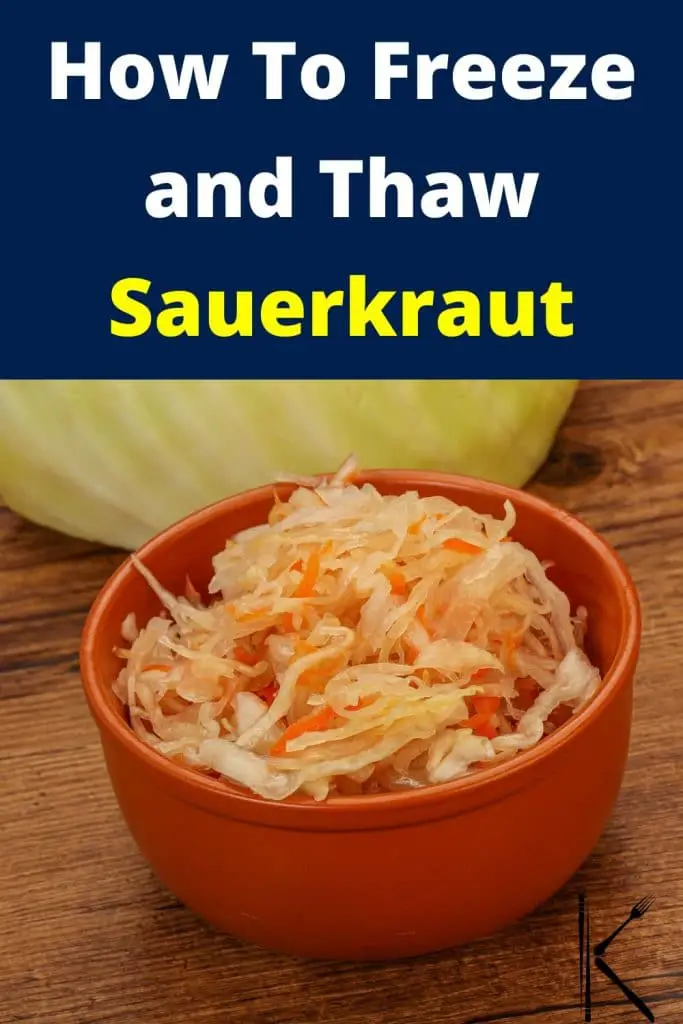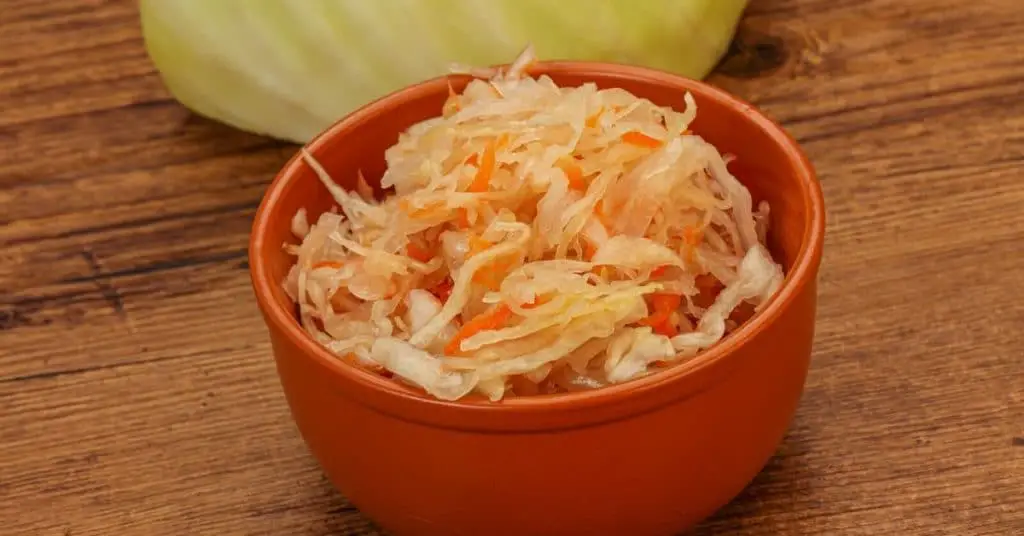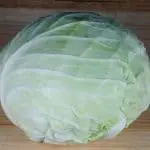In short, yes, you can freeze sauerkraut to retain its tangy flavor; it is best to freeze it when fresh, but it has a long shelf life in the refrigerator, making freezing optional; storing sauerkraut in a closed glass container in the fridge is recommended for ideal preservation.
With a little crunch and a lot of tang, sauerkraut is a fermented cabbage condiment known to have great digestive health benefits.
Although thought to have originated in China, sauerkraut is largely associated with Eastern European and German dishes, served with pork and sausages, borscht, or cooked into soups and stews. It makes a great relish with hot dogs and can even be tossed into salads.
Due to the fermentation process and acidic nature of sauerkraut, it has a very long shelf life, especially when stored in the refrigerator.
If you wish to further prolong its shelf life or have used it in a cooked dish, you can place it in the freezer to prevent it from going to waste.
Here is everything you need to know about freezing sauerkraut.
Can Sauerkraut Be Frozen?
Yes, sauerkraut can be frozen and even though freezing stops the fermentation, it will retain its tangy flavor.
It is best to freeze sauerkraut when still fresh, however, the product has a very long shelf life in the refrigerator so may not even need to be frozen at all to preserve it.
Sauerkraut should always be stored in a cold environment. Keeping it in the fridge in a closed glass container is ideal.
If the sauerkraut was purchased in a tin, first decant it into a glass or plastic container before storing it as tins are not suitable for storing in the refrigerator.
Raw or freshly made sauerkraut is most ideal for freezing, but if the product has been added to a cooked dish such as pork, it will still be safe to freeze. In this instance, it should be frozen as soon as the hot meal has sufficiently cooled down to room temperature.
Homemade sauerkraut can also be preserved by the method of canning.
This process however requires one to heat the jars and the food to extremely high temperatures, killing off any harmful bacteria. Unfortunately, in the case of sauerkraut, this means that the good bacteria will also be destroyed in the process.
The better option to retain the health benefits of sauerkraut and preserve the healthy bacteria is to freeze it, avoiding the extreme temperatures with the heating process.
How To Freeze Sauerkraut
When freezing sauerkraut, as with any other food product, it is important to prevent contact with air during the freezing process. Ensure the use of air-tight containers or zip lock freezer bags that can protect the sauerkraut from freezer burn.
Step 1: Portion
Divide the sauerkraut into portion sizes suitable to what you may require at a given time. Place each portion into a resealable plastic bag or freezer-friendly plastic jar.
Keep in mind that the liquid in the sauerkraut may expand on freezing. When storing sauerkraut, be sure not to fill the jar to the brim as it could burst open in the freezer if its too full.
Step 2: Remove Air and Seal
Close the jars. If using a plastic bag, lightly press out any air and seal.
Step 3: Label and Freeze
Label the bags or containers with the date of freezing to keep track of how long the product has been stored.
Freezing Tip: If you are planning to use only small amounts of sauerkraut at a time, portion spoonfuls into an ice cube tray and place it in the freezer to harden. Once frozen, remove the sauerkraut cubes from the tray and place them in a resealable freezer bag. Press out the air, seal, label, and freeze.
How To Thaw Frozen Sauerkraut
Defrosting sauerkraut can be done using different methods. The one you choose may affect how soon you need to consume it after thawing.
Method 1: Refrigerate
The best way to defrost sauerkraut is to place it in the fridge to thaw overnight. Store sauerkraut in the refrigerator and use within 3 to 5 days.
Method 2: Countertop
Defrost frozen sauerkraut by placing it on a countertop at room temperature to thaw. Use immediately once defrosted.
Method 3: Microwave
Place the frozen sauerkraut in the microwave and heat for 10 to 20-second increments, stirring in between each interval to distribute the heat evenly and prevent overheating. Once just thawed, remove from the microwave and use the sauerkraut immediately.
Types of Sauerkraut
Sauerkraut is made by fermenting cabbage with lactic acid bacteria in a pickling process called lactic acid fermentation.
Cabbage is shredded and layered with salt after which it is left to ferment. The sugar in the shredded cabbage reacting with the lactic acid is what causes its unmistakably tangy sour flavor.
All types of sauerkraut are made with a predominant cabbage base. It can then be pickled together with shredded carrots, beets, bell peppers, apples, and even cranberries for different variations.
Sauerkraut can be purchased in a glass jar, in a can, or it can easily be made at home.
FAQs
Conclusion
Used in savory applications, sauerkraut is a wonderful addition as a relish, mixed into a salad, added to soups, meat dishes, and stews. Not only is it a vibrant taste addition to any meal, but raw sauerkraut also offers digestive health benefits.
Although fermented foods have a long shelf life, when stored correctly in the refrigerator, you can extend its shelf life even further by freezing it.
If you’ve made a large batch or have leftover sauerkraut you want to preserve, follow the above outlined guidelines for freezing and don’t let any of this deliciously tangy relish go to waste.
If your sauerkraut looks fishy, check out these spoilage signs to look for and how long sauerkraut can last at all.
Up Next: How To Freeze Coleslaw

Image by depositphotos/AndreySt









